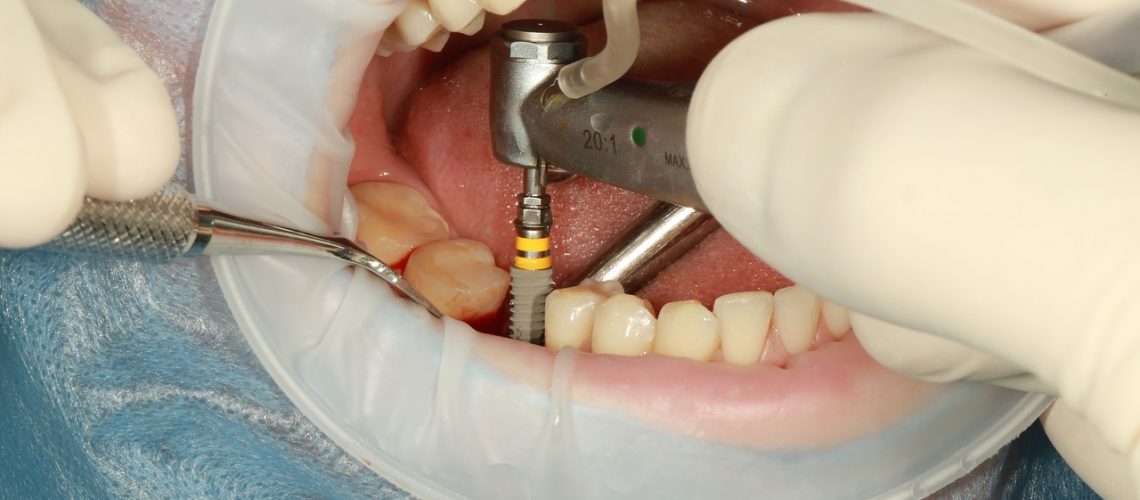The Main Principles Of Dental Sense
The Main Principles Of Dental Sense
Blog Article
Some Known Facts About Dental Sense.
Table of ContentsThings about Dental SenseThe Main Principles Of Dental Sense Getting The Dental Sense To WorkA Biased View of Dental Sense
are medical gadgets operatively implanted right into the jaw to restore an individual's capability to eat or their look. They provide support for synthetic (phony) teeth, such as crowns, bridges, or dentures. When a tooth is lost as a result of injury or condition, an individual can experience problems such as rapid bone loss, malfunctioning speech, or adjustments to chewing patterns that result in discomfort.Oral dental implant systems consist of an oral implant body and oral implant abutment and might additionally consist of a joint addiction screw. Kids dental. The oral implant body is surgically inserted in the jawbone instead of the tooth's root. The dental implant abutment is generally connected to the dental implant body by the abutment addiction screw and prolongs with gum tissues into the mouth to sustain the affixed synthetic teeth
(https://anotepad.com/note/read/pydwx7ht)Framework of The Dental Implant System picking dental implants, speak with your oral provider about the possible benefits and dangers, and whether you are a candidate for the treatment. Points to take into consideration: Your overall health is a crucial factor in establishing whether you are an excellent candidate for dental implants, how long it will take to recover, and how much time the implant might remain in location.
Cigarette smoking might impact the healing process and decrease the long-term success of the dental implant. The recovery process for the implant body may take a number of months or longer, throughout which time you typically have a short-lived joint in location of the tooth. the oral implant procedure: Thoroughly follow the oral health guidelines provided to you by your dental copyright.
The Dental Sense Statements
Implant failure can cause the demand for one more operation to take care of or replace the implant system. Recovers the ability to eat Brings back aesthetic look Assists keep the jawbone from diminishing because of bone loss Preserves the wellness of the bordering bone and gum tissues Helps keep surrounding (neighboring) teeth stable Improves lifestyle Damages to bordering natural teeth throughout implant positioning Injury to the surrounding cells throughout surgical procedure, such as sinus perforation Injury throughout surgical procedure (as an example, crack of bordering jawbone) Poor function, such as feeling like the teeth do not bite together usually A feeling that the tooth is loosened or twisting in place resulting from an abutment screw loosening Implant body failure (looseness of the implant body) as a result of systemic infection, which might be more probable in people with unrestrained diabetes because of local infection in bone and gum tissues sustaining the dental implant body as a result of delayed healing, which might be more probable in people who smoke Trouble cleaning the gum tissues around the implant, resulting in bad dental hygiene Without treatment gum condition Post-surgical feeling numb due to nerve impingement or damage Constantly notify wellness treatment service providers and imaging technicians that you have oral implants prior to any kind of magnetic resonance imaging (MRI) or x-ray treatments.
FDA is not aware of any negative events reported for MRI or x-ray procedures with dental implants. Oral implants systems are usually constructed from products that adhere to global consensus requirements of the International Company for Standardization (ISO) or ASTM International. These requirements have information of what makes a risk-free material.

An oral implant is a structure that changes a missing tooth. With screw-like gadgets, the doctor inserts a dental implant right into the jawbone, and it acts as a support for an artificial tooth, called a crown.
About Dental Sense
Some people are not eligible for oral implant surgical treatment. It is for oral cosmetic surgeons to run on people with: intense illnessuncontrollable metabolic diseasebone or soft cells illness or infectionIf these problems Click Here are fixed, an individual can have the surgical procedure. In, oral cosmetic surgeons avoid operating people with: If individuals with any of the above undertake dental implant surgical treatment, there is a higher risk of the implant falling short.

Oral implant surgery is an individualized procedure. Give you time to recover. Connect the blog post and last crown, bridge or denture.
Next off, your surgeon will very carefully position the oral implant right into your jaw. Lastly, your doctor will certainly rearrange your gum tissues and shut the incision with stitches. If your dental implant is near the front of your mouth, your dentist will certainly make a momentary tooth for you to wear until you recover. In this way, you won't have a void in your smile while you recuperate.
Rumored Buzz on Dental Sense
Your supplier can inform you what to anticipate in your situation. During the healing phase, your jawbone must fuse to the dental implant. This process, called osseointegration, is important for security and long-lasting success. This procedure can take anywhere from three to nine months. In some instances, it might take much longer.
Once your implant heals, your dental practitioner can connect the abutment (small adapter blog post) and your last reconstruction (crown, bridge or denture). This normally takes about one hour to complete and might need a 2nd small surgical procedure. You shouldn't feel any kind of discomfort throughout your dental implant procedure because your copyright will use medication to numb your gums.
Report this page